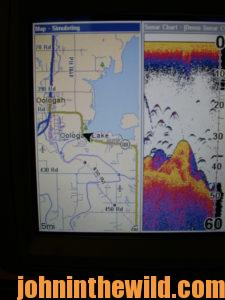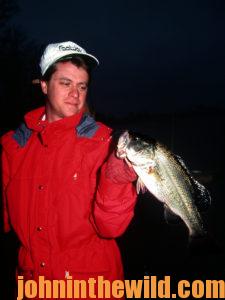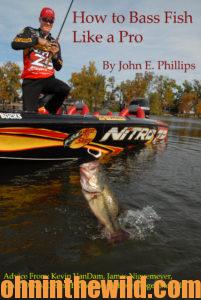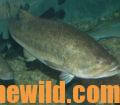Editor’s Note: Hunting season is not the time to be bass fishing, or at least that’s what most sportsmen once believed. However, in the last two decades, with the volume of information that has been unearthed about bass and bass angling, many fishermen have found that hunting season and the cold months of January and February are the most-productive times of the year to bass fish.
The most-effective way to identify any underwater structure is with a depth finder. When you are fishing for wintertime bass, having more than one depth finder mounted on your boat will give you an advantage. With a console-mounted depth finder, a sportsman easily and quickly can run to an area where he anticipates finding bottom structure intersecting a thermocline. A thermocline can be identified on a depth finder by the angler’s seeing a lot of fish activity on his depth finder at one particular depth. Many anglers today use two, side-scanning down-scanning GPS depth finders with the side scanning mounted on the bow and the bow-mounted depth finder on down scanning and LiveVu mounted on the trolling motor. Often bass will be holding close to structure under the baitfish. Sometimes depth finders may not be able to discriminate the bait from the bass. However, anytime you observe baitfish concentrated, assume that there are bass under them or close to them.
With this much information, you’re now ready to begin to fish. Oftentimes schools of bass are so concentrated, and the bass will be so slow in biting in the wintertime that if you are not bouncing the bait right off the bass’s nose, you can’t catch the fish you’ve found. Therefore, most productive wintertime bassers have the transducers of their bow-mounted depth finders attached to the feet of their trolling motors.
As Denny Brauer, noted bass pro from Del Rio, Texas, who’s won every bass-fishing accolade possible, once told me, “If you are not bouncing the bait off the bass’s nose and can’t see where your jig is fishing, then the likelihood of catching a bass is greatly reduced. Many times during the winter, a bass may not move more than 1- to 1-1/2-feet to take a bait. If you are fishing 3-4 feet away from the bass you have found, then you very well may not even get a strike. If you are angling 3-4 feet above those bass, there is a very good chance you may not get a hit. By fishing a big spoon and by having the sensitivity on your depth finder turned up high enough to see that spoon as it falls, many times you actually can see yourself jigging your bait right in front of the fish. That’s where the lure has to be if it’s going to catch the fish. I like to fish directly over my trolling motor and right through the cone of my depth finder. Then I can constantly stay in touch with where the fish are, where my jig is and at what depth I need to be fishing to be successful. I don’t believe that a wintertime bass fisherman consistently can catch bass if he doesn’t have his transducer mounted to his trolling motor and is fishing right under his transducer.”
feet away from the bass you have found, then you very well may not even get a strike. If you are angling 3-4 feet above those bass, there is a very good chance you may not get a hit. By fishing a big spoon and by having the sensitivity on your depth finder turned up high enough to see that spoon as it falls, many times you actually can see yourself jigging your bait right in front of the fish. That’s where the lure has to be if it’s going to catch the fish. I like to fish directly over my trolling motor and right through the cone of my depth finder. Then I can constantly stay in touch with where the fish are, where my jig is and at what depth I need to be fishing to be successful. I don’t believe that a wintertime bass fisherman consistently can catch bass if he doesn’t have his transducer mounted to his trolling motor and is fishing right under his transducer.”
To learn more about bass fishing, check out John E. Phillips’ book, “How to Bass Fish Like a Pro” at http://amzn.to/YpoJvD and available in Kindle, print and Audible versions.
Tomorrow: How to Catch Cold Water Bass with a Jigging Spoon










